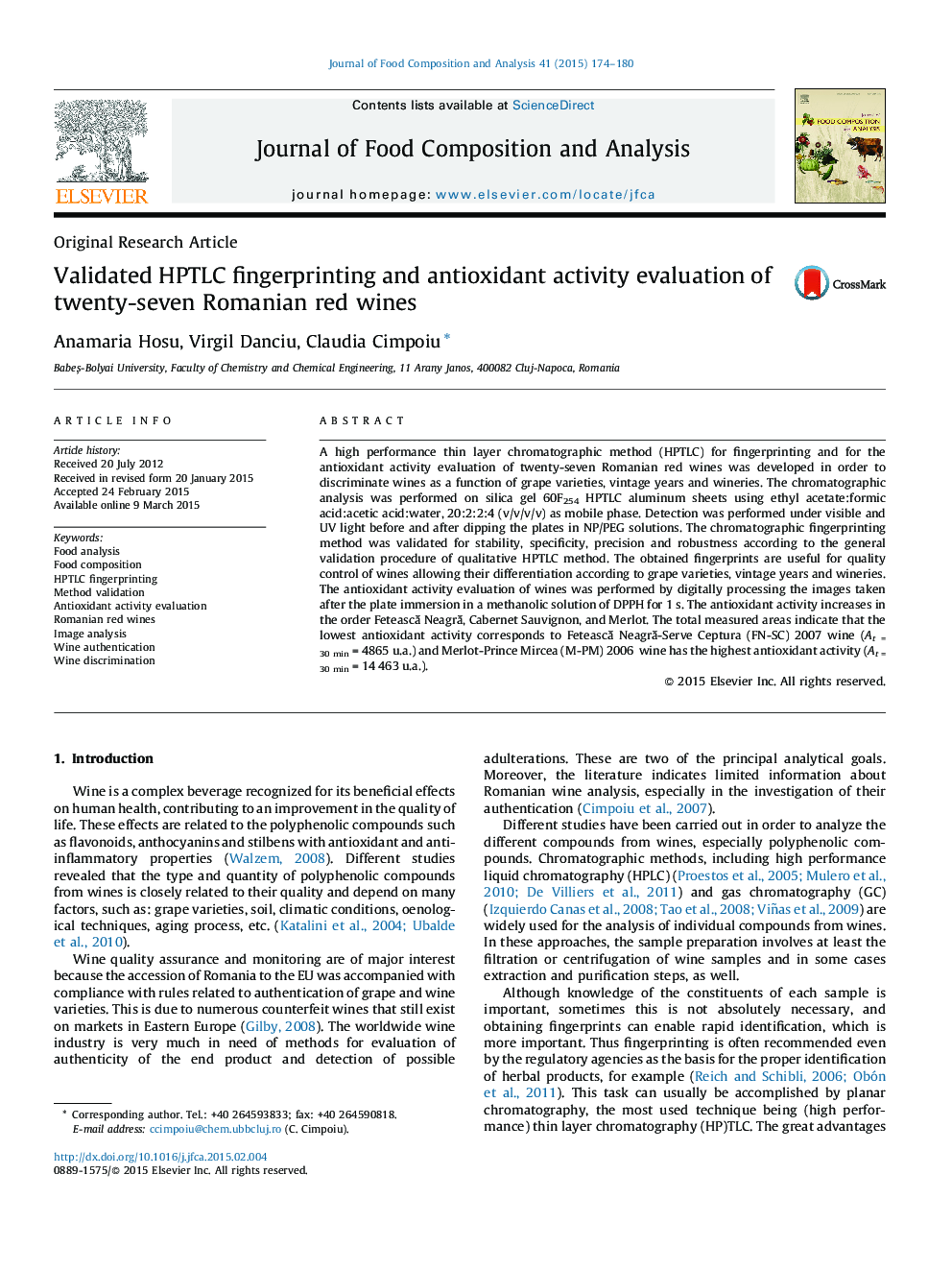| Article ID | Journal | Published Year | Pages | File Type |
|---|---|---|---|---|
| 1218243 | Journal of Food Composition and Analysis | 2015 | 7 Pages |
•A new HPTLC method for red wines fingerprinting was proposed and validated.•The antioxidant activity of wines was evaluated using the HPTLC method.•The fingerprint of wines depends on grape sort, year of harvesting and the vineyard.•The method provides useful information for authentication and adulteration of wines.
A high performance thin layer chromatographic method (HPTLC) for fingerprinting and for the antioxidant activity evaluation of twenty-seven Romanian red wines was developed in order to discriminate wines as a function of grape varieties, vintage years and wineries. The chromatographic analysis was performed on silica gel 60F254 HPTLC aluminum sheets using ethyl acetate:formic acid:acetic acid:water, 20:2:2:4 (v/v/v/v) as mobile phase. Detection was performed under visible and UV light before and after dipping the plates in NP/PEG solutions. The chromatographic fingerprinting method was validated for stability, specificity, precision and robustness according to the general validation procedure of qualitative HPTLC method. The obtained fingerprints are useful for quality control of wines allowing their differentiation according to grape varieties, vintage years and wineries. The antioxidant activity evaluation of wines was performed by digitally processing the images taken after the plate immersion in a methanolic solution of DPPH for 1 s. The antioxidant activity increases in the order Fetească Neagră, Cabernet Sauvignon, and Merlot. The total measured areas indicate that the lowest antioxidant activity corresponds to Fetească Neagră-Serve Ceptura (FN-SC) 2007 wine (At = 30 min = 4865 u.a.) and Merlot-Prince Mircea (M-PM) 2006 wine has the highest antioxidant activity (At = 30 min = 14 463 u.a.).
